- Home
- Philip MacDonald
The Rynox Mystery
The Rynox Mystery Read online
‘THE DETECTIVE STORY CLUB is a clearing house for the best detective and mystery stories chosen for you by a select committee of experts. Only the most ingenious crime stories will be published under the THE DETECTIVE STORY CLUB imprint. A special distinguishing stamp appears on the wrapper and title page of every THE DETECTIVE STORY CLUB book—the Man with the Gun. Always look for the Man with the Gun when buying a Crime book.’
Wm. Collins Sons & Co. Ltd., 1929
Now the Man with the Gun is back in this series of COLLINS CRIME CLUB reprints, and with him the chance to experience the classic books that influenced the Golden Age of crime fiction.
THE DETECTIVE STORY CLUB
E. C. BENTLEY • TRENT’S LAST CASE
E. C. BENTLEY • TRENT INTERVENES
E. C. BENTLEY & H. WARNER ALLEN • TRENT’S OWN CASE
ANTHONY BERKELEY • THE WYCHFORD POISONING CASE
ANTHONY BERKELEY • THE SILK STOCKING MURDERS
LYNN BROCK • NIGHTMARE
BERNARD CAPES • THE MYSTERY OF THE SKELETON KEY
AGATHA CHRISTIE • THE MURDER OF ROGER ACKROYD
AGATHA CHRISTIE • THE BIG FOUR
WILKIE COLLINS • THE MOONSTONE
HUGH CONWAY • CALLED BACK
HUGH CONWAY • DARK DAYS
EDMUND CRISPIN • THE CASE OF THE GILDED FLY
FREEMAN WILLS CROFTS • THE CASK
FREEMAN WILLS CROFTS • THE PONSON CASE
FREEMAN WILLS CROFTS • THE PIT-PROP SYNDICATE
FREEMAN WILLS CROFTS • THE GROOTE PARK MURDER
MAURICE DRAKE • THE MYSTERY OF THE MUD FLATS
FRANCIS DURBRIDGE • BEWARE OF JOHNNY WASHINGTON
J. JEFFERSON FARJEON • THE HOUSE OPPOSITE
RUDOLPH FISHER • THE CONJURE-MAN DIES
FRANK FROËST • THE GRELL MYSTERY
FRANK FROËST & GEORGE DILNOT • THE CRIME CLUB
ÉMILE GABORIAU • THE BLACKMAILERS
ANNA K. GREEN • THE LEAVENWORTH CASE
DONALD HENDERSON • MR BOWLING BUYS A NEWSPAPER
VERNON LODER • THE MYSTERY AT STOWE
PHILIP MACDONALD • THE RASP
PHILIP MACDONALD • THE NOOSE
PHILIP MACDONALD • MURDER GONE MAD
PHILIP MACDONALD • THE MAZE
NGAIO MARSH • THE NURSING HOME MURDER
G. ROY McRAE • THE PASSING OF MR QUINN
R. A. V. MORRIS • THE LYTTLETON CASE
ARTHUR B. REEVE • THE ADVENTURESS
FRANK RICHARDSON • THE MAYFAIR MYSTERY
R. L. STEVENSON • DR JEKYLL AND MR HYDE
J. V. TURNER • BELOW THE CLOCK
EDGAR WALLACE • THE TERROR
ISRAEL ZANGWILL • THE PERFECT CRIME
FURTHER TITLES IN PREPARATION
Copyright
COLLINS CRIME CLUB
an imprint of HarperCollinsPublishers Ltd
1 London Bridge Street
London SE1 9GF
www.harpercollins.co.uk
First published in Great Britain by W. Collins Sons & Co. Ltd 1930
Published by The Detective Story Club Ltd 1931
Copyright © Estate of Philip MacDonald 1930, 1963
Cover layout design © HarperCollinsPublishers Ltd 2017
A catalogue copy of this book is available from the British Library.
This novel is entirely a work of fiction. The names, characters and incidents portrayed in it are the work of the author’s imagination. Any resemblance to actual persons, living or dead, events or localities is entirely coincidental.
All rights reserved under International and Pan-American Copyright Conventions. By payment of the required fees, you have been granted the non-exclusive, non-transferable right to access and read the text of this e-book on screen. No part of this text may be reproduced, transmitted, down-loaded, decompiled, reverse engineered, or stored in or introduced into any information storage and retrieval system, in any form or by any means, whether electronic or mechanical, now known or hereinafter invented, without the express written permission of HarperCollins.
Source ISBN: 9780008248994
Ebook Edition © November 2017 ISBN: 9780008249007
Version: 2017-10-30
Contents
Cover
The Detective Story Club
Title Page
Copyright
Introduction
Epilogue
Reel One
Sequence the First
Sequence the Second
Sequence the Third
Sequence the Fourth
Sequence the Fifth
Sequence the Sixth
Reel Two
Reel Three
Sequence the First
Sequence the Second
Sequence the Third
Sequence the Fourth
Prologue
The Wood-for-the-Trees
Footnotes
About the Publisher
INTRODUCTION
I WONDER how many professional storytellers can look back on their own early work with true objectivity. If there are any, I envy them. Because I know I can’t. I always fall into the egocentric trap of disliking mine far too much; of feeling (as was once said of a friend of mine who was forever working on the great American novel and never finishing the first chapter) that ‘it isn’t good enough for me to have written.’
The only time I’m ever halfway satisfied with any work I’ve done is for a short while after I’ve finished it; a depressingly short and evanescent while. A week later any satisfaction with my labours is beginning to fade. In a month I am more than dubious. After a year, I’m convinced the whole thing smells to high heaven, and I can’t imagine why anyone would ever trouble to read it.
But I realize that these are conditioned reflexes, and auto-conditioned at that, so I made up my mind to ignore them as I approached the task of going over the three books in this collection. But I still started on the job with trepidation; because (to be euphemistic) the tales were written some time agofn1 and I was terrified that, in spite of their original success, they might prove hopelessly out of date.
But somehow they didn’t; and I was able to confine such editing as I did to matters of cutting, wording and style, of writing qua writing. Surprisingly, the stories themselves, as examples of three completely different types of what is now (unfortunately, I think) generically labelled ‘Mystery Story’, seemed to me to hold up pretty well: The Rasp as a pure, dyed-in-the-wool Whodunit; Murder Gone Mad as a tale of mass-murder, half Whodunit and half (to use a label of my own coining) Howcatchem; and Rynox, called a ‘light-hearted thriller’ at the time of its birth, as one of those razzle-dazzle, now-you-see-it-now-you-don’t affairs which many of us case-hardened toilers in the field of the roman policierfn2 like to throw off once in a while.
The Rasp was my third novel. It was also my first detective story,fn3 and long before I’d finished it I was determined it should be my last. Conceived during a decade which was a Whodunit heyday, a time when it seemed that everyone in the storytelling business was trying his hand at the form, it was begun in a burst of youthful egotism, to show the world not only that I could do this too, but that I could do it better!
However, by the time I’d finished it I wasn’t at all sure that I was showing anybody anything. All I knew was that this was hard, hard work; I had discovered that if the writer of romans policiers believes (as I think he has to) that his books should be novels as well as puzzles; that they must, always, be literate and credible as well as scrupulously fair to the reader, the writing of them is pure self-torture!
But—well, The Rasp made quite a splash when it came out, first in England and later in the US.† And I’m still t
orturing myself for a living, nowadays not only between book covers but also in the dramatic forms of film and television. Although I have, at various and several times, sought relief quite successfully in telling other sorts of story, I seem always to come masochistically back to the sweat and the frustration, the challenge and the agony, of working at what John Dickson Carr has called ‘the greatest game of all’. And it might be worth noting that, when I do, I frequently use as my chief instrument a character (Anthony Gethryn) whom I never imagined, when I tucked him tidily away in matrimony at the end of The Rasp, would ever show his inquisitive and somewhat supercilious nose again …
Now for Murder Gone Mad. This was my third or fourth detective novel, and is a very different cup of tea from the first. An attempt to break away from the then accepted, and terribly confining, limits of the pure Whodunit (blunt-instrumented corpse in copse or library—eight suspects—least likely murderer) it was suggested by the macabre but very real-life exploits of the greatest mass murderer of the century, the monster of Düsseldorf.
I’m not sure of my memory on this point, but I think I started the book with the idea that, as well as being a departure from the straight Whodunit form, it would also be easier to write. If I did think this, I was sadly mistaken. It was, in its own demonic way, every bit as tough to do. Because, after all, when the author (or policeman, if it comes to that) is faced with a clever and careful and motiveless killer, how does he set about uncovering him?
But the book got finished somehow and was very well received,fn4 so I suppose I did all right by the theme, which is, after all, timeless. An interesting point, however, did occur to me while I was going over it; a point which might be worth some elaboration.
It concerns the present-day preoccupation with the psyche and all its widely bandied but only dimly understood -iatrys and -opaths and -ologies. If I were to be writing this book today, I believe I would feel bound to probe at length into the subconscious past of the murderer (in search, so to speak, of the psora and trauma of that dark district) so that I could eventually reveal that the whole trouble was caused by the fact that, at an early age, this unfortunate homicidal maniac (like the character in Cold Comfort Farm) had seen something nasty in the woodshed.
But, in the days when I did write Murder Gone Mad I felt no such compulsion. It was enough, then, that the murderer was mentally unhinged; that the murderer was killing without sane motive; that the murderer was eventually caught …
That was the way we used to do it—and I’m not at all sure we weren’t right …
This leaves Rynox. As I have already intimated, it is a much lighter book than the others; lighter in every way. Writing it was really a sort of busman’s holiday; and, at the time, I almost had fun working on it, particularly since it satirized several persons and institutions in the London of that time—
I have just caught myself wondering whether the satire, unrecognizable here and now, was the only reason for the book doing as well as it did. And this means, I fear, that I’m back with my conditioned reflexes and had better stop, before I start saying, ‘It isn’t good enough for me to have written,’ and thereby open the door temptingly wide for any critic who might feel like adding the words, ‘or anyone else’ …
PHILIP MACDONALD
in Three for Midnight, 1963
EPILOGUE
1
GEORGE surveyed the Crickford’s man and the package with pompous disapproval.
‘Bringing a thing like that to the front!’ said George. ‘Oughter know better. If you take your van down Tagger’s Lane at the side there, you’ll find our back entrance.’
George may have been impressive; was, indeed, to a great many people. But the vanman was not impressed. He evidently cared little for George’s bottle-green cloth and gilt braid; less for George’s fiercely-waxed moustache, or George’s chest, medals or no medals.
‘This unprintable lot,’ said the vanman, ‘’as got this ’ere obscene label on it. My job ain’t to stand ’ere chewin’ the unsavoury rag with any o’ you scoutmasters! My job’s to deliver. Are you or are you not medically goin’ to take unclean delivery?’
The normal purple of George’s cheeks turned slowly to a rich black. George could not speak.
‘If you don’t,’ said the vanman, ‘gory well ’urry, off we go with the lot.’ He stooped and looked at the label. ‘And it’s addressed to one of your big noises … F. MacDowell Salisbury, Essquire. President: Naval, Military and Cosmo … Cosmos … whatever the ’ell it is, Assurance. That’s you, ain’t it?’
He held out a grimy thin-leaved book, together with a quarter-inch stub of unpointed pencil. A dark thumb pointed to the foot of the open page.
‘You signs,’ said the vanman, ‘along dotted line ’ere, if you can write. Otherwise you’d better put your mark and I’ll write somethink against it for yer. ’Urry up now!’
It will always be matter for conjecture as to what George would have done at this stage had not at this moment the car of F. MacDowell Salisbury drawn up immediately behind the Crickford’s van. This left George only one course. Quickly he signed. Quickly he laid hold of the unwieldy package, which consisted of two large and heavy sacks tied together at the tops. With considerable exertion of his great strength he managed to drag them up the two remaining steps and in through the swing doors of glittering glass and mahogany. Just as, puffing, he had rested them against a corner of the panelled wall, the President came up the steps. George got to the door just in time; held it open; touched his cap; strove to keep his laboured breathing silent.
‘’Morning, George!’ said the President.
George touched his cap again. He could not speak yet. The President was in good humour. Instead of striding straightway down the marble-floored corridor to the lift, he halted, his head on one side. He surveyed George.
‘George,’ he said, ‘you look hot.’
‘I am—fuf—sir!’
The President’s eyes strayed to the unwieldy sacks. ‘Weightlifting, George?’
‘Yessir. Just as you come, sir, I was telling the Crickford’s man that he ought to ’ve took the lot round to the Lane entrance, but I saw it’s for you, sir, so I brought it in this side.’
‘For me?’ The President’s tone and his eyebrows went up.
‘Yessir, according to the label.’
‘Extraordinary thing!’ The President walked over to the corner, bent down over the sacks and lifted the label. ‘Extraordinary thing!’ he said again. He put a podgy white hand to the joined sacks and tried their weight. ‘Feels heavy,’ he said.
‘Heavy, sir,’ said George, ‘it is!’
Again the President stooped to the label. Yes, it bore his name; also, in red ink and capital letters—staring capitals—the words:
‘EXTREMELY PRIVATE AND
CONFIDENTIAL
PERSONAL FOR MR SALISBURY ONLY.’
‘Well, I’ll be damned!’ said the President. ‘Better get a couple of men and have it brought up to my office.’
2
The President, with fat white forefinger, pressed the third of the bell pushes upon his desk.
‘Miss Winter,’ he said, to the bell’s genie, ‘have they brought up those sacks?’
‘The sacks have just come, Mr Salisbury.’
‘Right! Just give the fellows a bob each out of the Petty Cash and then I’ll come out. Most extraordinary-looking thing, isn’t it, Miss Winter?’
‘Yes, Mr Salisbury.’
Miss Winter, very severe, very neat, most efficient, went back to the outer office. The President, walking slowly after her, saw her distribution of largesse; saw the porters touching clean hats with dirty forefingers; saw the door close behind them; went out into Miss Winter’s room.
Very untidily heaped in its very tidy centre were the sacks. Miss Winter was bending down, reading the label.
‘Got a knife?’ said the President.
Miss Winter had a knife. Miss Winter always had everything.
&nbs
p; ‘Just see,’ said the President, ‘whether you can cut the string.’
Miss Winter could cut the string and did. The sacks fell apart. The President stirred one with his toe. The contents were hard, yet yielding.
‘I can’t make it out!’ said the President.
‘Shall I open a sack?’ said Miss Winter. A very practical woman.
‘Yes, yes. Let’s have a look.’
Once more Miss Winter stooped; once more the penknife came into play as it ripped the stout thread which kept the mouth of the sack closed. Miss Winter inserted a hand …
‘Good God!’ said the President.
He took two short steps and stood at Miss Winter’s shoulder. Upright again, she was holding between her hands a thick elastic-bound wad of one-pound Bank of England notes.
‘Good God!’ said the President again.
He bent himself over the mouth of the open sack and thrust in his own arm. His hand came away with yet another package …
He let the sack lie flat upon the floor, bent over it, caught it a little way down from its top and shook. Other packets fell from it upon the floor …
He looked into the sack …
There could be no doubt! The sack—it looked like a hundredweight-and-a-half corn sack—was filled, crammed, with bundles of one-pound Bank of England notes. They were not new, these notes. The bundles did not bear that solid, block-like appearance of unused paper money, but, although neat, were creased, and numbered—as Miss Winter at once was to find—in anything but series.
‘Good God!’ said the President. Himself, with Miss Winter’s knife, he cut the threads which bound the mouth of the other sack. And this second sack was as its brother. If, indeed, there was any difference, it was that this second sack held still more bundles than the first. The President stood in the middle of the floor. Round his feet there lay, grotesque and untidy, little disordered heaps of money.
The President looked at Miss Winter. Miss Winter looked at the President.
‘I suppose,’ said the President, ‘that I am at the office, Miss Winter? I’m not by any chance at home, in bed and fast asleep?’

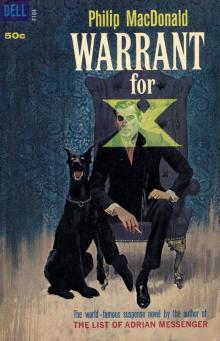 Warrant for X
Warrant for X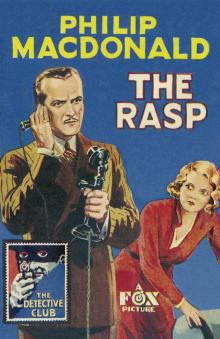 The Rasp
The Rasp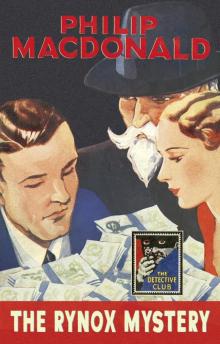 The Rynox Mystery
The Rynox Mystery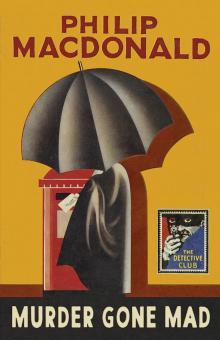 Murder Gone Mad
Murder Gone Mad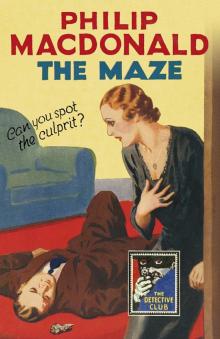 The Maze
The Maze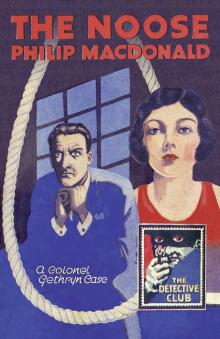 The Noose
The Noose